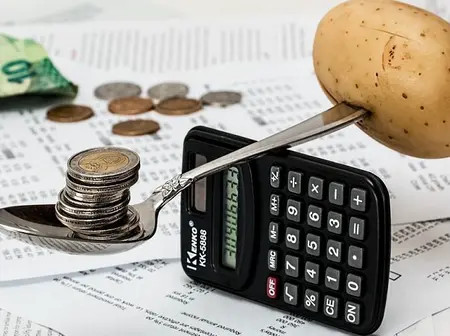The government is intensifying its efforts to control the rising cost of living after the Kenya National Bureau of Statistics (KNBS) reported that inflation increased to 4.6 percent in September 2024, up from 4.4 percent in August.
Although the inflation rate is still within the government’s target range of 2.5 to 7.5 percent, the steady increase has worried many families and businesses. The biggest pressure has come from food, fuel, and housing. Food prices rose by 6.0 percent in September compared to the same month last year. Sugar prices went up by more than 30 percent over the past year, while a two-kilogram packet of maize flour now sells at around KSh 180, compared to KSh 150 a year ago. Fuel prices have also risen sharply, with a litre of petrol selling above KSh 200 in Nairobi.
The Central Bank of Kenya (CBK) has closely monitored interest rates. The CBK’s benchmark rate currently stands at 13 percent. By keeping rates steady, the bank hopes to support economic growth while ensuring inflation does not get out of control. The CBK governor said the bank will continue monitoring international oil prices and the value of the shilling, which has weakened against the US dollar in recent months. A weaker shilling makes imports like fuel, cooking oil, and wheat more expensive.
The government has also turned to imports of essential food items to help bring prices down. Transport of maize, rice, and sugar has been allowed into the country duty-free to increase supply. For example, in August, the government approved the import of more than 1 million bags of maize to stabilize flour prices. Similar imports of sugar have been made to reduce shortages.
At the same time, agriculture support programs have been expanded. Farmers are receiving subsidies on fertilizers, seeds, and pesticides. The Ministry of Agriculture has distributed over 3 million bags of subsidized fertilizer this year, cutting the price per bag from around KSh 6,000 to KSh 3,500. Officials believe this will boost production of maize and other staple crops, reducing Kenya’s reliance on imports in the coming harvest season.
The government is also focusing on energy because rising fuel and electricity prices have been a big driver of inflation, affecting both households and businesses. To ease the burden, the government announced plans to increase investment in renewable energy, especially geothermal and wind power. Currently, more than 80 percent of Kenya’s electricity comes from renewable sources, but the government hopes to expand this further to bring down costs in the long run.
Economists say these steps are important but warn that Kenya still faces risks from worldwide markets. If international oil prices rise further, local fuel and transport costs will go up again. In September, global oil prices averaged $95 per barrel, compared to about $75 per barrel earlier in the year. This rise directly feeds into local pump prices. The shilling has also weakened to around KSh 150 per US dollar, making imports costly.
Officials point out that the economy grew by 5 percent in the second quarter of 2024, supported by good rains and strong performance in agriculture, transport, and services. They believe that if food production continues to improve and energy reforms succeed, inflation will remain under control in the coming months.
For now, Kenyans are hoping that the measures being taken will bring some relief to their pockets. Lower food and fuel prices would make a big difference for millions of families already struggling with the high cost of living. Businesses, too, are waiting to see if their operating costs will come down, allowing them to invest and create more jobs.

Leave a Reply